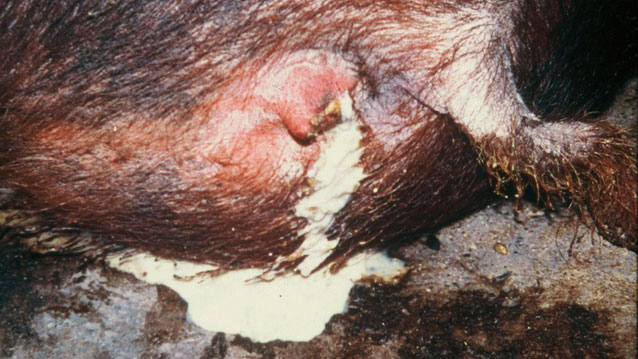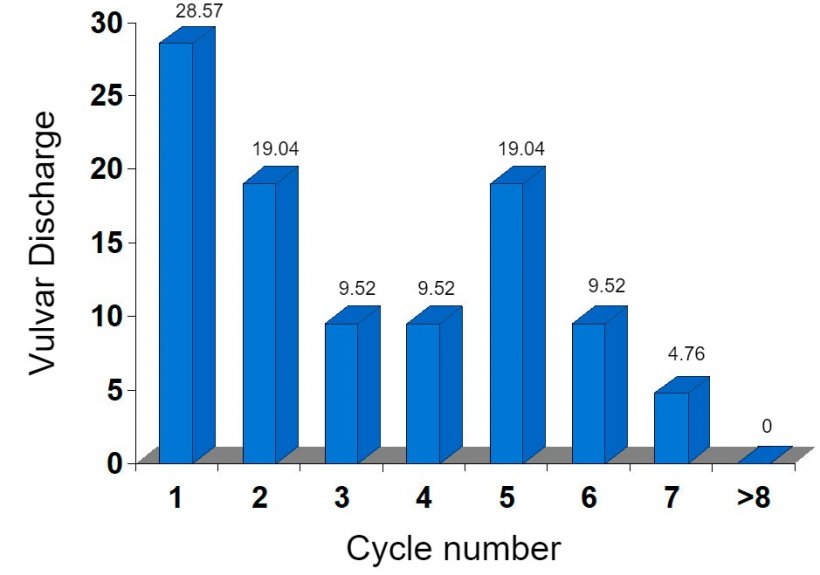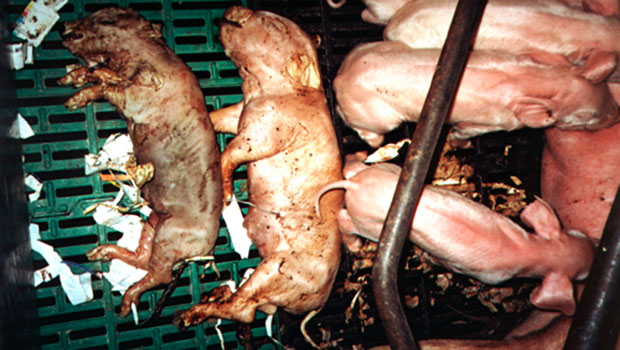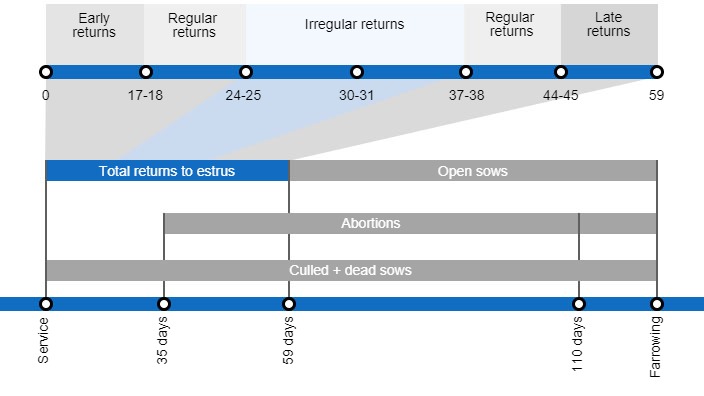Irregular returns to estrus occur from 25 to 37 days post-service. A sow has an irregular return (abnormally long estrous cycle) when all the embryos have been lost (< 35 days of gestation) and are reabsorbed, or when only 5 or fewer embryos remain at 10 days of gestation.
Under normal conditions, these should account for a very small percentage of the matings < 3%.

Causes of irregular returns to estrus
Among the infectious causes that can lead to sows having an irregular return to estrus, three main types should be distinguished:
- Infections caused by normal bacteria on the farms that, due to poor hygiene or a reduction in the sow's immune response, end up causing a loss of gestation. The most common clinical signs are sows with vulval discharge (Photo 1). Usually this affects more old sows (≥ parity 5) or young sows, when the acclimation process is inadequate (Photo 1).

Photo 1. Sow with discharge from vulva

Graph 1. Vulval discharge as a percentage of the matings per cycle on a farm that has problems with irregular returns.
-
Infections produced by viruses considered common on our farms such as Parvovirus (enterovirus or SMEDI virus). This type of infection causes embryonic loss and therefore irregular returns. The clinical presentation of this type of infection will be accompanied by stillbirths, mummies, and also reduced litter size, but it does not cause abortions or systemic signs (Photo 2).

Photo 2. Stillborn piglets and mummies.
-
Infections specific to the reproductive system that generally produce abortions: Brucellosis, Leptospirosis, PRRS, etc.
See the non-infectious causes for irregular returns ![]()
Use the button above or the flowchart to continue troubleshooting the returns, or to access other parts of the tool.





